Frederik Rehbach
Resource Planning for Hospitals Under Special Consideration of the COVID-19 Pandemic: Optimization and Sensitivity Analysis
May 16, 2021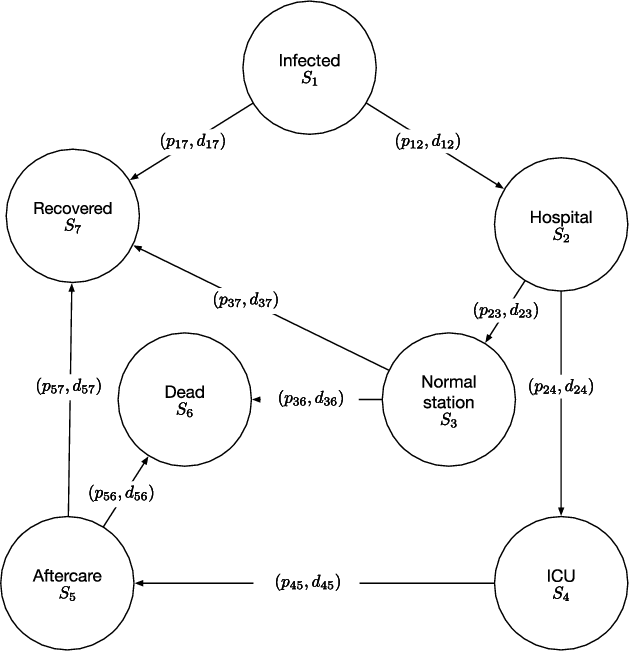
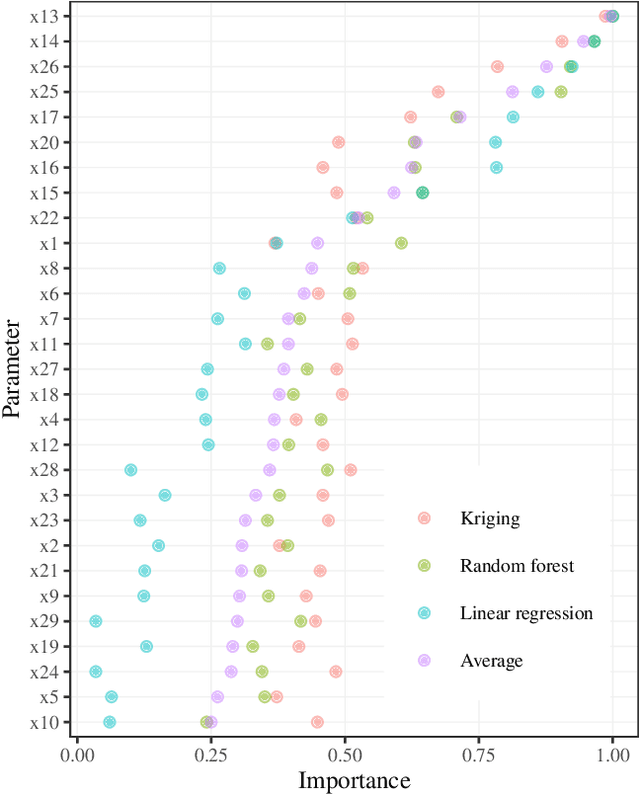
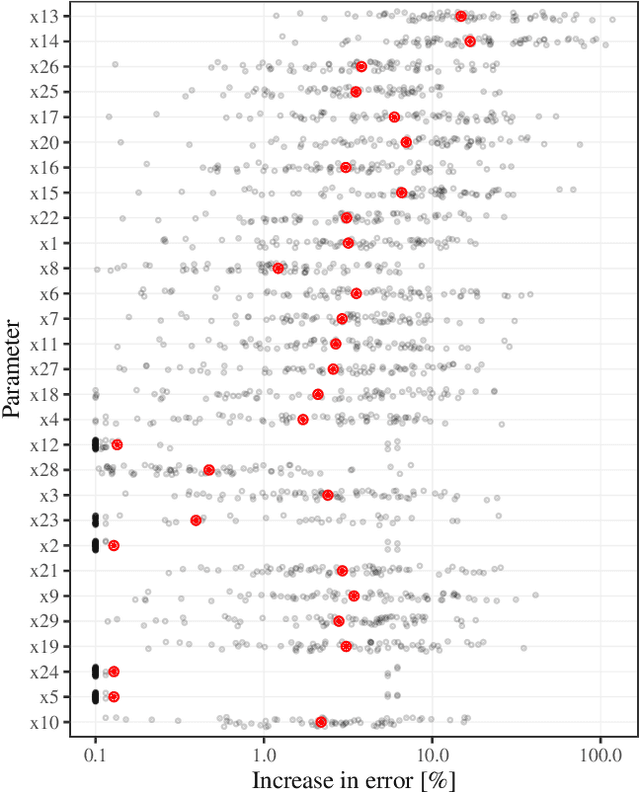

Abstract:Crises like the COVID-19 pandemic pose a serious challenge to health-care institutions. They need to plan the resources required for handling the increased load, for instance, hospital beds and ventilators. To support the resource planning of local health authorities from the Cologne region, BaBSim.Hospital, a tool for capacity planning based on discrete event simulation, was created. The predictive quality of the simulation is determined by 29 parameters. Reasonable default values of these parameters were obtained in detailed discussions with medical professionals. We aim to investigate and optimize these parameters to improve BaBSim.Hospital. First approaches with "out-of-the-box" optimization algorithms failed. Implementing a surrogate-based optimization approach generated useful results in a reasonable time. To understand the behavior of the algorithm and to get valuable insights into the fitness landscape, an in-depth sensitivity analysis was performed. The sensitivity analysis is crucial for the optimization process because it allows focusing the optimization on the most important parameters. We illustrate how this reduces the problem dimension without compromising the resulting accuracy. The presented approach is applicable to many other real-world problems, e.g., the development of new elevator systems to cover the last mile or simulation of student flow in academic study periods.
Hospital Capacity Planning Using Discrete Event Simulation Under Special Consideration of the COVID-19 Pandemic
Dec 14, 2020Abstract:We present a resource-planning tool for hospitals under special consideration of the COVID-19 pandemic, called babsim.hospital. It provides many advantages for crisis teams, e.g., comparison with their own local planning, simulation of local events, simulation of several scenarios (worst / best case). There are benefits for medical professionals, e.g, analysis of the pandemic at local, regional, state and federal level, the consideration of special risk groups, tools for validating the length of stays and transition probabilities. Finally, there are potential advantages for administration, management, e.g., assessment of the situation of individual hospitals taking local events into account, consideration of relevant resources such as beds, ventilators, rooms, protective clothing, and personnel planning, e.g., medical and nursing staff. babsim.hospital combines simulation, optimization, statistics, and artificial intelligence processes in a very efficient way. The core is a discrete, event-based simulation model.
Continuous Optimization Benchmarks by Simulation
Aug 14, 2020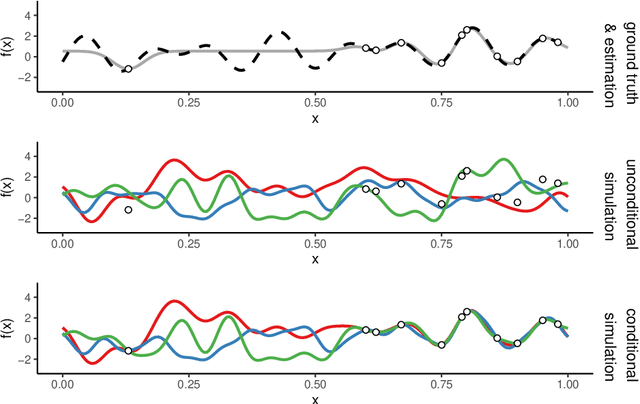
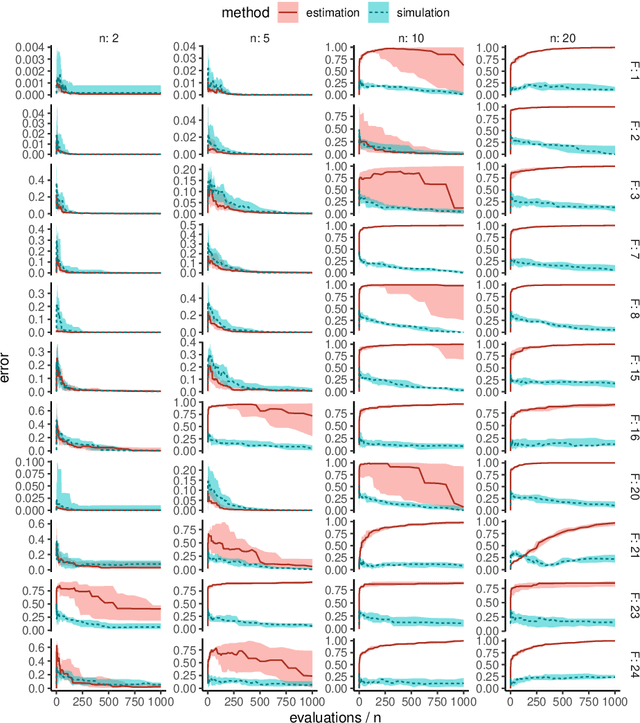
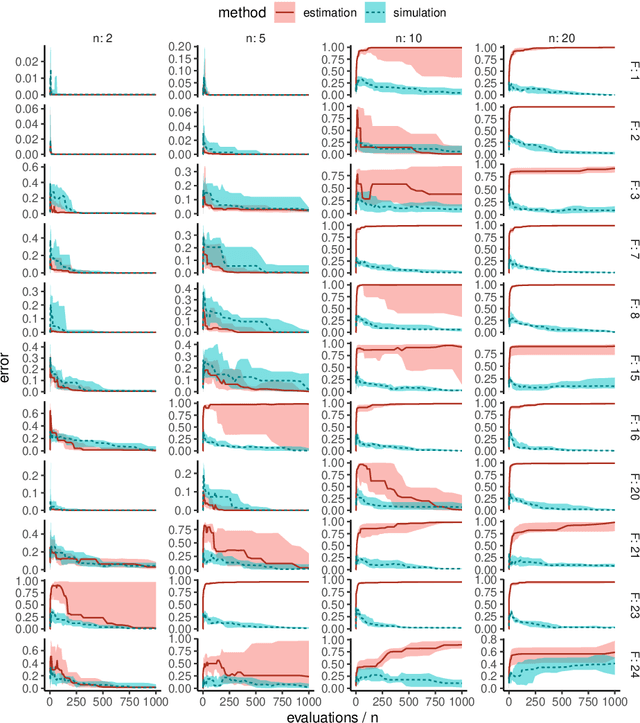
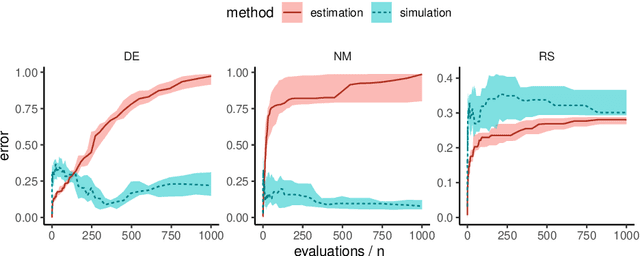
Abstract:Benchmark experiments are required to test, compare, tune, and understand optimization algorithms. Ideally, benchmark problems closely reflect real-world problem behavior. Yet, real-world problems are not always readily available for benchmarking. For example, evaluation costs may be too high, or resources are unavailable (e.g., software or equipment). As a solution, data from previous evaluations can be used to train surrogate models which are then used for benchmarking. The goal is to generate test functions on which the performance of an algorithm is similar to that on the real-world objective function. However, predictions from data-driven models tend to be smoother than the ground-truth from which the training data is derived. This is especially problematic when the training data becomes sparse. The resulting benchmarks may not reflect the landscape features of the ground-truth, are too easy, and may lead to biased conclusions. To resolve this, we use simulation of Gaussian processes instead of estimation (or prediction). This retains the covariance properties estimated during model training. While previous research suggested a decomposition-based approach for a small-scale, discrete problem, we show that the spectral simulation method enables simulation for continuous optimization problems. In a set of experiments with an artificial ground-truth, we demonstrate that this yields more accurate benchmarks than simply predicting with the Gaussian process model.
Expected Improvement versus Predicted Value in Surrogate-Based Optimization
Feb 17, 2020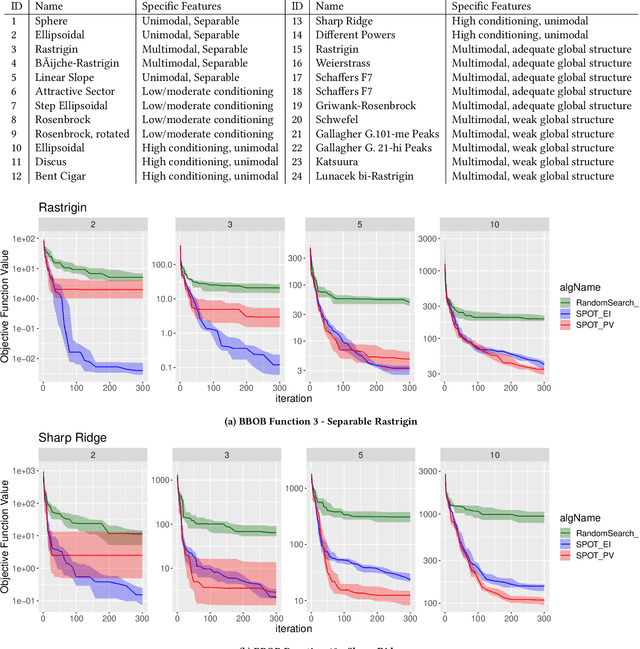
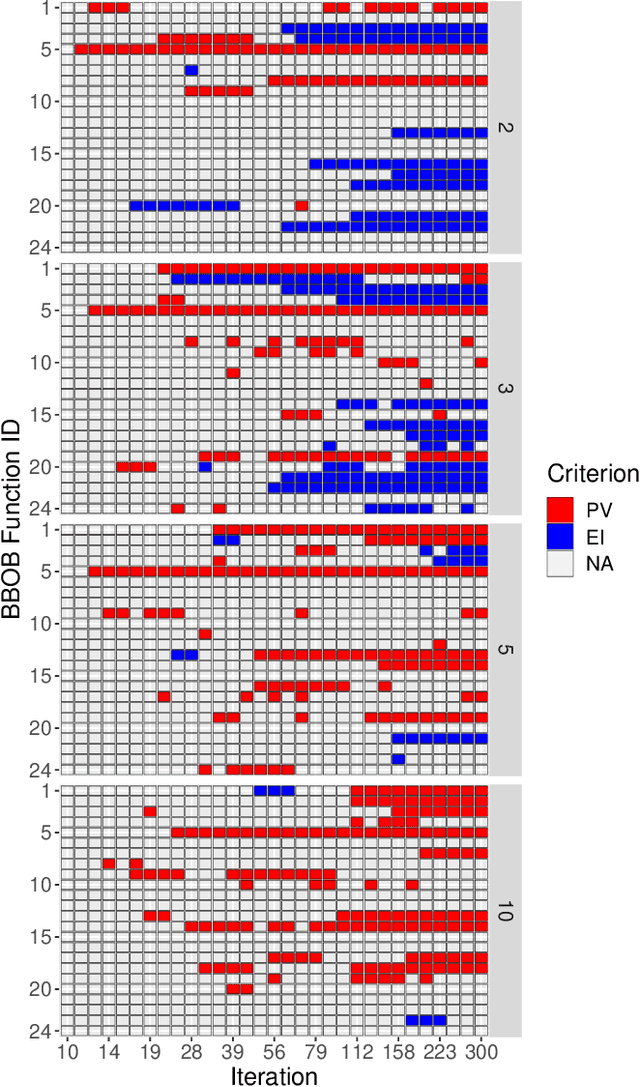
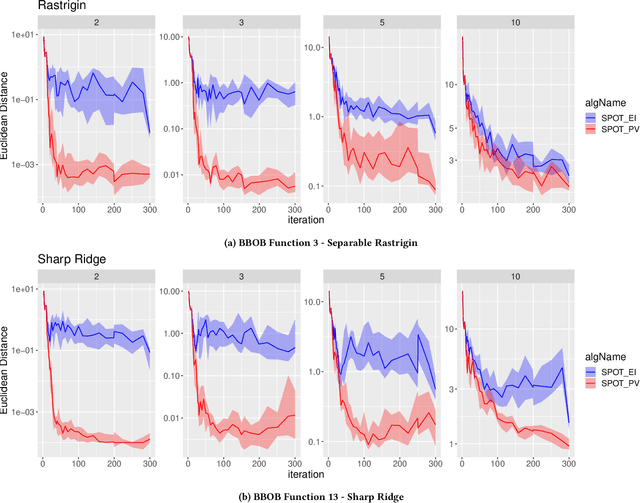
Abstract:Surrogate-based optimization relies on so-called infill criteria (acquisition functions) to decide which point to evaluate next. When Kriging is used as the surrogate model of choice (also called Bayesian optimization), one of the most frequently chosen criteria is expected improvement. We argue that the popularity of expected improvement largely relies on its theoretical properties rather than empirically validated performance. Few results from the literature show evidence, that under certain conditions, expected improvement may perform worse than something as simple as the predicted value of the surrogate model. We benchmark both infill criteria in an extensive empirical study on the `BBOB' function set. This investigation includes a detailed study of the impact of problem dimensionality on algorithm performance. The results support the hypothesis that exploration loses importance with increasing problem dimensionality. A statistical analysis reveals that the purely exploitative search with the predicted value criterion performs better on most problems of five or higher dimensions. Possible reasons for these results are discussed. In addition, we give an in-depth guide for choosing the infill criteria based on prior knowledge about the problem at hand, its dimensionality, and the available budget.
 Add to Chrome
Add to Chrome Add to Firefox
Add to Firefox Add to Edge
Add to Edge